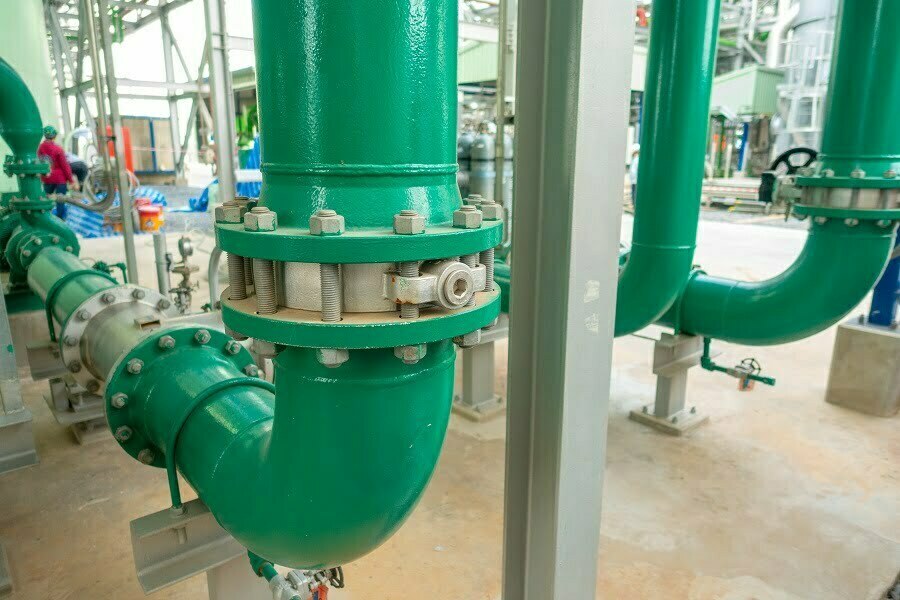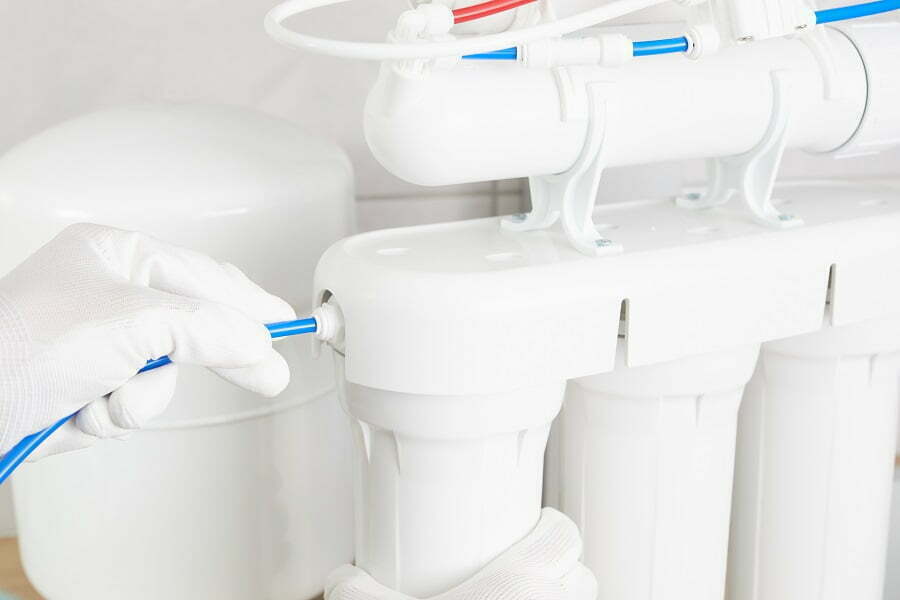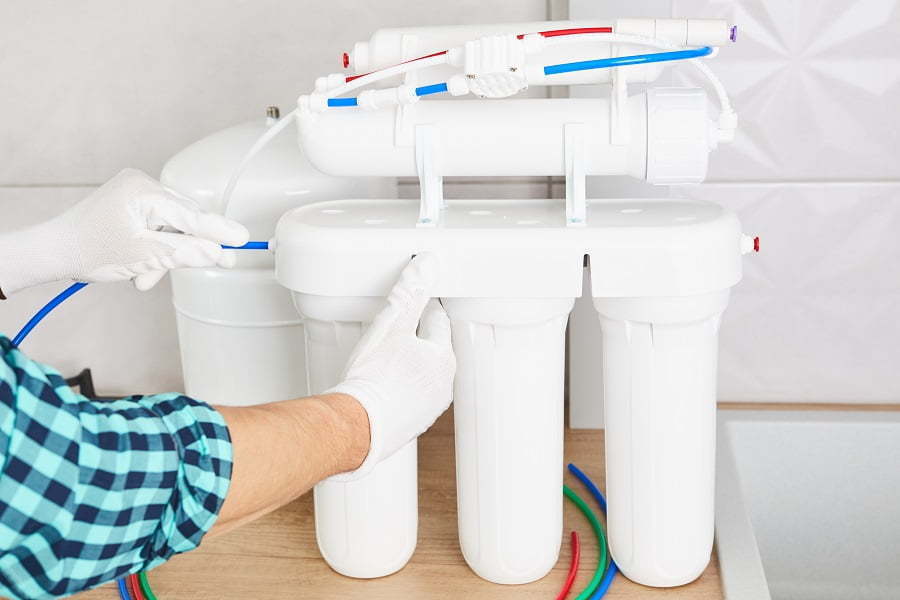Last updated on
It is true that you now have to filter your water at home and here is why and how. Read on!
We’ve all heard about the water safety crisis in Flint, Michigan, but did you know that according to one study, nearly 63 million Americans across the nation have been exposed to unsafe drinking water?
There’s a growing water quality problem in the country, but you can combat it by installing a water filter in your home.
Problems with the US Water Supply

There are three major problems with US tap and well water:
- Contaminants like lead and arsenic are above-permitted levels in many places.
- There is little to no adequate legislation against pollutants like chromium 6 for example.
- Rural and low-income regions are continually suffering from deteriorating water infrastructure.
Excess Lead and Arsenic
According to a study from March 2021 that analyzed 120 water samples from across the country, 118 samples contained higher than permitted levels of lead, and over 8% contained arsenic. Excess arsenic can lead to cancer, while lead can cause kidney problems and cardiovascular diseases.
Chromium 6 Pollution
Chromium 6 is a cancer-causing metal that’s present in the water supply of over 200 million Americans. Unlike lead and arsenic, as of 2021, there is very little legislation against chromium 6 pollution, because its detrimental effects have only been recently discovered.
Deteriorating Infrastructure
American water infrastructure has reached critical levels in many parts of the country, particularly in rural and low-income regions. The American Society of Civil Engineers estimates that some 4.1 million Americans don’t even have access to basic sewage cleaning infrastructure.
Failure to maintain and improve pipelines across the country has also caused an estimated annual discharge of over 900 billion gallons of untreated sewage into America’s waterways, affecting overall water quality even further.
What Can You Do About It?
Raising awareness about America’s growing water problem and voting for environmentally responsible politicians that care about our infrastructure are two things we can all do to contribute to bettering American water long-term.
But, in the short term, to secure a safe supply of drinking water for yourself and your family, the ideal solution is to install a water filter. Water filters remove all potentially dangerous chemicals and contaminants from your water supply and make it as safe as possible for consumption.
The Different Types of Home Water Filters

There are four major types of water filters to be used at home. Each one has its specific advantages and disadvantages that you should be aware of before making a purchase decision. Ideally, you should install a water filter that addresses your specific problem(s).
Reverse Osmosis Filters
A reverse osmosis filter forces water through a semi-permeable membrane that prevents the entry of unwanted chemicals and contaminants into your drinking water. After the water has passed through the filter, it is stored in a tank where it can be easily accessed.
Reverse osmosis filters are very effective in removing pollutants, and they are environmentally friendly. But, they produce some wastewater that needs to be disposed of, and they can sometimes incur a high initial cost.
Activated Carbon Filters
Activated carbon filters use layers of carbon filter media that absorb contaminants as the water passes through them. Activated carbon filters are often constructed using natural materials such as bituminous wood and coconut shells.
Besides, carbon filters are affordable, and easy to maintain and install.
But, they’re not effective against certain contaminants such as nitrogen and heavy metals. Carbon filters can’t remove most bacteria either, and they don’t last as long as other types of water filters.
Pitcher Water Filters
Pitcher water filters are a compact technology that involves filling a jug with water before it passes through a filter cartridge that removes contaminants and impurities. The water then enters a reservoir from where it can be poured for consumption.
The advantages of pitcher water filters are that they are cheap, small, portable, lightweight, and easy to use.
The disadvantages are that they can be slow to work and not very effective compared to larger filter systems. The charcoal filters in pitchers also need to be replaced regularly.
Faucet Filters
Faucet filters connect directly to your kitchen faucet or bathroom tap and pass the water through a small filter cartridge combining different filter layers.
- A non-woven screen filters out large impurities like sediments.
- The water may then pass through a compressed block of activated carbon.
- Zeolite is often used to remove chemicals.
Faucet filters have the advantage of being convenient and inexpensive. Plus, they allow you to switch between filtered and unfiltered water.
But, like pitcher filters, they are slow to operate and may not work with all types of faucets.
Which Filter Should You Get?
It depends on your needs and budget. If you’d like to filter all the water in your household, installing either activated carbon or reverse osmosis filters would be best since they’re designed to filter very large amounts.
If, however, you’d like a smaller, inexpensive water filter that can be easily moved from one place to another, it’d be best to opt for either a pitcher filter or a faucet filter.
In short, America’s water problem is worsening, and the best way to deal with it is to install the right type of water filter for you.
Related reading:
Table of Contents




